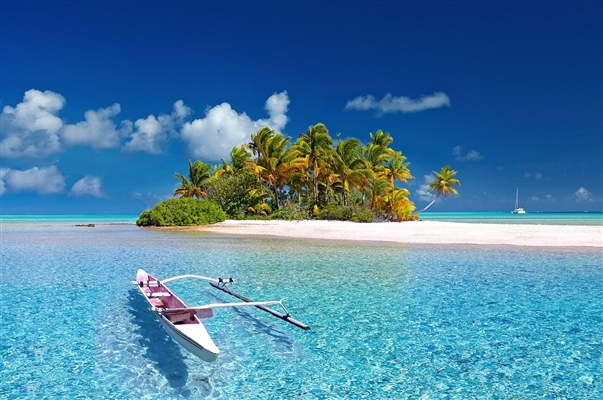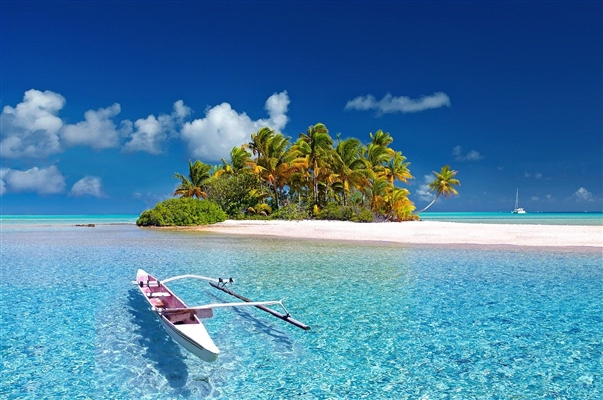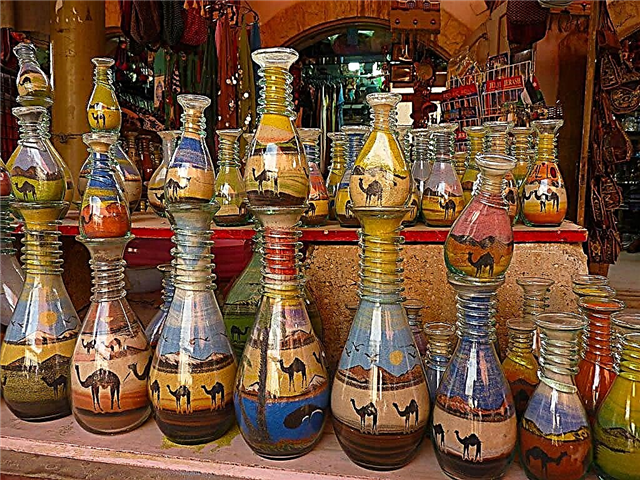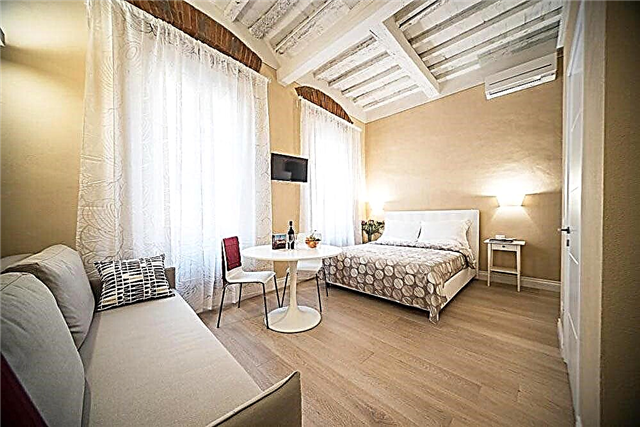The most popular Austrian lakes among tourists are mostly mountainous. Despite this, they are easy to reach in a variety of ways. The abundance of travelers with proper nature management does not negatively affect the environment. The water here is clean and clear, suitable for swimming in summer, and turns into an ice rink in the winter months.
The coast of almost all lakes is partially built up with tourist centers and centers. The variety of leisure programs helps to suit the tastes of different people. More active guests will go fishing, sports or go to the ski resort. Those who are closer to a measured holiday can take a walk along the lakes, book a boat excursion or sit in a themed restaurant near the water.
The most beautiful lakes in Austria
Popular lakeside holiday destinations with cities and resorts in Austria.
Hallstatter See
Located near Bad Ischl. It reaches 5 km in length and 2 km in width. The lake looks like a fjord and is surrounded by mountains. On the slopes is the famous village of Hallstatt, a UNESCO site. Excursions to the former salt mines, cruises on the lake are popular here. The area around the lake is extremely picturesque; it is one of the most beautiful places in Austria.

Zeller See
Freshwater lake, on the banks of which is the city of Zell am See. Length - 4 km, width - up to 1.5 km. In terms of tourism, it is used all year round. In winter, the water freezes and the surface becomes a skating rink or ski run. In summer, the water warms up to + 22 ° C. All conditions for diving have been created. Boating is popular throughout Zeller See, except in the southern part, where there is a lot of aquatic vegetation.

Wolfgangsee
The lake can be found on the border of Salzburg and Upper Austria. The area is 13 km², and the depth reaches 114 meters. Diving enthusiasts come here for the "Franzosenchantse" - a special area where an underwater labyrinth has formed due to flooded trees. Each coastal town is famous for something different. For example, St. Gilgen has beautiful beaches, and St. Wolfgang has a puppet museum with more than a thousand exhibits.

Achensee
The largest lake in the federal state of Tyrol. Area - 6.8 km², depth - up to 133 meters. Due to its length and constant winds, Achensee is suitable for windsurfing and sailing. In the vicinity there are inexpensive pensions with good service, as the region is a tourist. Attractions nearby: nature reserve, waterfalls, ancient catholic churches.
Hotels on Booking.com: Achensee

Mondsee
One of the warmest lakes in the Salzkammergut, the water warms up to + 26 ° C. The area is 13.8 km². There are two resorts on its shores. Mondsee has a large beach complex with diving towers and children's areas. In St. Lorenz there are more old buildings, in one of the churches there is an organ from the end of the 17th century. In both towns, conditions for active recreation are created: courts, golf courses, bowling and more.
Hotels on Booking.com: Mondsee

Wörthersee
Located in the south of the country, near the border with Slovenia. The area is over 19 km², the average depth is about 50 meters. The lake freezes over about once every 10 years. The area became a tourist destination in the 19th century. There is plenty to do in the surrounding area: climb the world's tallest wooden observation tower, visit the Mahler Museum, take a walk in the mountains or take a bike tour around the lake. The best time to visit is early summer.

Faker-Ze
Belongs to the territory of Carinthia. Area - 2.2 km², depth - up to 30 meters. One of the cleanest in the Alps. A tourist center with a hotel complex, shops, cafes and clubs has been built on the coast. Leisure activities also include cycling, horseback riding, motorboating, etc. From late spring to mid-autumn, many festive events and fairs are held in the vicinity of the lake.

Peeburger
The lake is lost in the mountains and is popular with tourists precisely as a natural site. However, civilization at its best reached here too: a boat station, a platform for bathers and a restaurant were built. You can get to Piburger via a long and picturesque wooden bridge. Not far from here, kayakers start during traditional competitions. Summer in the area is hot, but short.

Weissensee
Located at the foot of the Galitalera Alps. Area - 6.5 km², depth - up to 97 meters. There is a bridge over the narrowest part of the lake. The length of the coastline is about 23 km. Two thirds are reserved lands. The color of the water near the coast is different due to the chalk deposits. In winter, the water surface freezes and turns into a natural ice rink. In summer, there are many divers and lovers of measured relaxation.

Gruner See
The lake in Styria was formed by melting snow. For this reason, its area varies significantly depending on the season. In winter, the depth is 1 to 2 meters, and the county turns into a park. In summer they melt, the water becomes more, and the depth increases to 12 meters. Due to this phenomenon, the area is very popular with diving enthusiasts who take colorful photos in the underwater park.

Millstatter-See
It is the second largest lake in Carinthia. The area is 19 km², the depth reaches 142 meters. The best time to visit is July, when the swimming season is gaining strength and the water warms up to + 26 ° C. Bicycle paths with a total length of 28 km are laid around. Nearby resorts provide a full range of services and entertainment from spas to golf courses. Fishing equipment can be rented.

Almze
The lake is located in Upper Austria. Area - 0.85 km², maximum depth - 5 meters. Practically unsuitable for swimming because of the low water temperature. For the winter it freezes completely, the thickness of the ice is impressive, therefore it attracts skaters. Around there are convenient paths for walking, in terms of infrastructure it is inferior to other lakes. Despite this, there are places to stop and eat nearby.
Hotels on Booking.com: Almse

Traunze
The deepest in Austria is located in the central part of the country. Area - 24.5 km², depth - up to 191 meters. Two cities have been built on the coast. Gmunden is famous for its old castle on the water, as well as for its handmade ceramics. Traunkirchen has all the conditions for active recreation. There is also a church from the middle of the 18th century. Walking along the lake is a favorite pastime of both locals and tourists.
Hotels on Booking.com: Traunsee

Plansee
Located in the highlands in Tyrol. The area is slightly less than 3 km², the maximum depth is 78 meters. The high copper content made the water turquoise. Most of the coastline is covered in rocks, but there are also beach areas. There are several campgrounds, restaurants and entertainment venues, while the development is not dense. There is a pier with boat rentals and pleasure boats.
Hotels on Booking.com: Plansee

Uttersee
The largest body of water in the Austrian Alps belongs to the Salzkammergut resort area. Area - 45.9 km², depth - up to 171 meters. Ancient ruins can be found in the vicinity. Cities are built on the coast, so there is a wide choice of places to stay. Each of them provides a range of services and leisure options. For example, in Nussdorf there is a large beach, as well as a "bar mile" - a cluster of drinking establishments and restaurants.

Klopeiner See
One of the most suitable lakes for swimming is in Carinthia. Its area is 1.1 km², and its depth is about 48 meters. There are over fifty tennis courts, several diving schools, a golf course, bike paths 200 km long, stables, and organized fishing. And this is not a complete list of options for active holidays on the coast of Klopeiner See.

Ossiacher See
Located in the lands of Carinthia.The area is 10.5 km², the average depth is 20 meters. On the slopes of the neighboring mountains, bases have been built and about 30 ski slopes of varying difficulty have been laid. Coastal cities are ready to offer tourists modern service and a wide range of leisure activities. Nearby attractions: Terra Mystica Cave, Puppet Museums in Villach, Miniature Museum in Klagenfurt, Monkey Mountain and more.

Lunersee
The lake is located in the federal state of Vorarlberg. The bottom is 1,500 meters, the maximum width is 750 meters. The depth reaches 139 meters. It increased significantly after the construction of the dam. You can get here by funicular. A tourist station, also called a hut in the local manner, operates on a permanent basis. Travelers can stay overnight or dine here.

Gosauseen
Three lakes are located on the border of Upper Austria and Styria. The reservoirs were trapped in the crevice of the mountain range. Vorderer Gosau is the largest and richest in fish. There are buildings on the banks of Gosaulak and Khinter Gosau, and they are filled with water only in spring. The total length of the group is more than 5 km. The lakes are interconnected by narrow channels. The popular resort of Hallstatt is just 10 km away.
Hotels on Booking.com: Gosau

Fuschlsee
Belongs to the territory of Salzburg. Area - 2.7 km², depth - up to 68 meters. A large sports complex has been built on the shore. There are two beaches - "Fuschl" and "Stolingerhof". Of all the bodies of water in this federal state, Fuschlsee has the clearest water. Its quality is comparable to that of drinking. The use of motor boats is prohibited on the lake. Fishing has a limited season from April to late autumn.

Grundlsee
The largest lake in Styria. Area - 4 km², depth - up to 64 meters. Very high environmental performance, including the purity of the water. There are several guesthouses and hotels right on the beach. The water warms up poorly; even at high air temperatures, it is cool most of the summer. Festivals, carnivals and other events are held regularly. In winter, there are numerous ski and snowboard trails.
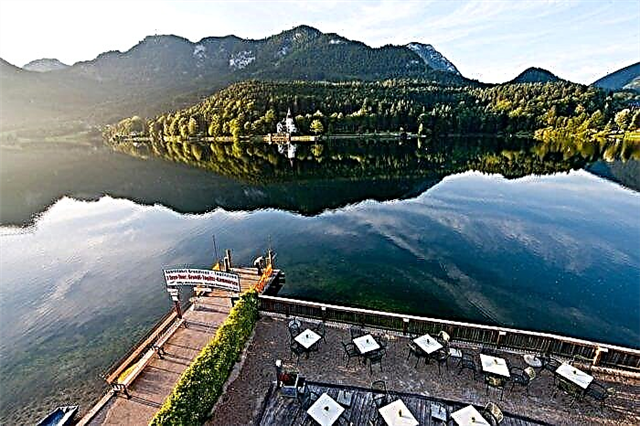
Toplitzie
The lake belongs to the lands of Styria. The area is 0.54 km², the average depth is 70 meters. The terrain is difficult to access, with poor infrastructure. There is a legend that the Nazis flooded many valuables here, including works of art. It is impossible to study the bottom completely due to flooded trees and other large objects. Authorities have banned treasure hunting without special permission.
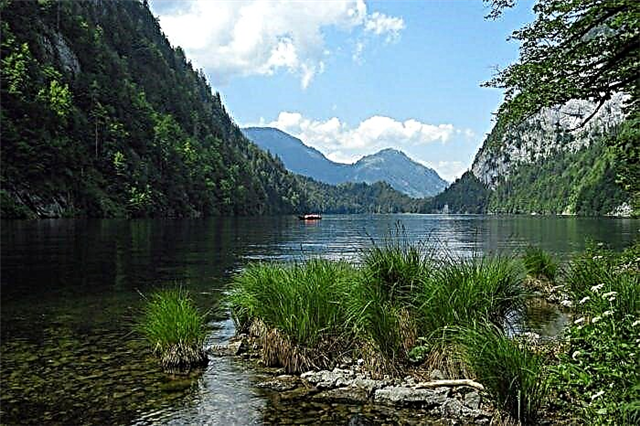
Hintersteiner
It is located in the Wilde Kaiser National Park. The area is 0.56 km², the depth is 13 meters on average. The lake is fed by underground sources. Therefore, the water is always cool and clean. Its transparency reaches 10 meters. There is a natural beach on the coast. Circular walks along the coastline are popular among tourists. Hotels of varying degrees of comfort have been built within a few kilometers.

Walchsee
One of the warmest lakes in Tyrol. Area - 0.95 km², depth - about 21 meters. The water temperature here is practically unchanged. Leisure in the area: archery, water sports, golf, horseback riding. Mountain bike trails and walking paths have been paved. Guided tours of nearby cities. About 10 km from the lake, a water attraction, also called an outdoor pool, was built in the forest.

Lake constance
Located on the border of Austria, Germany and Switzerland. In fact, it represents three reservoirs at once: the Upper and Lower lakes and the Rhine river, which connects them. The area is 536 km², the average depth is 90 meters. the largest city in the Austrian part is Bregenz. There are many attractions here, including St Martin's Tower and the largest floating stage in the world. Navigation is well developed on the lake.


